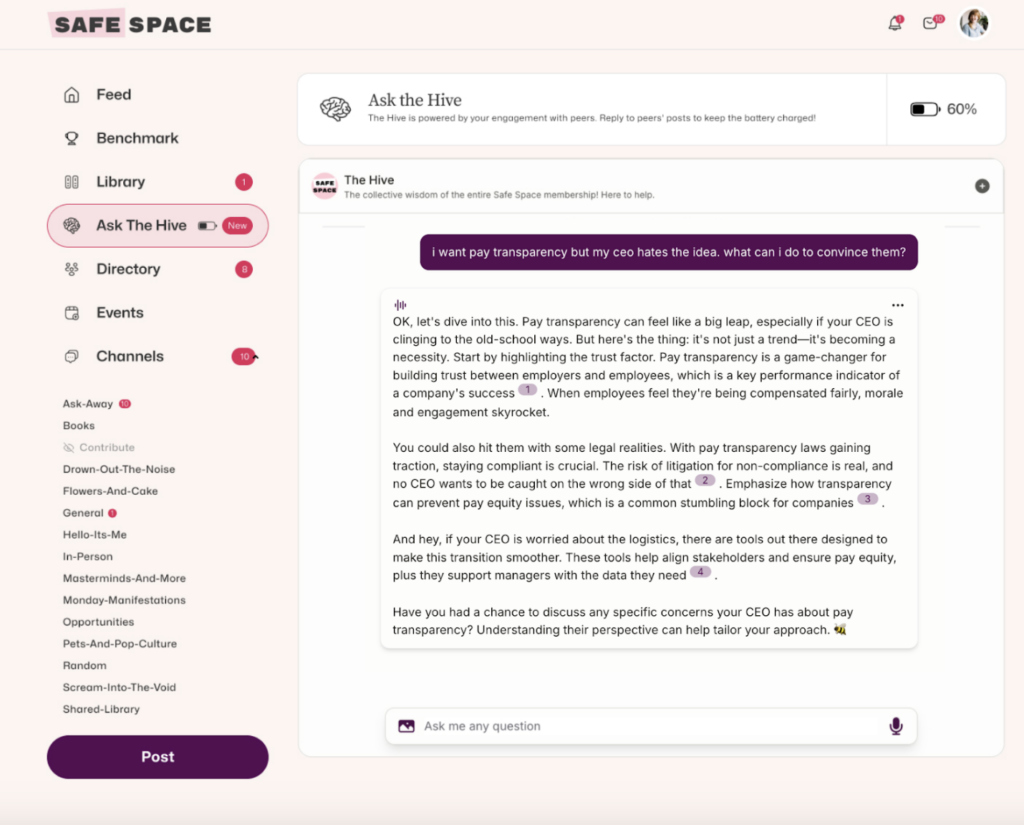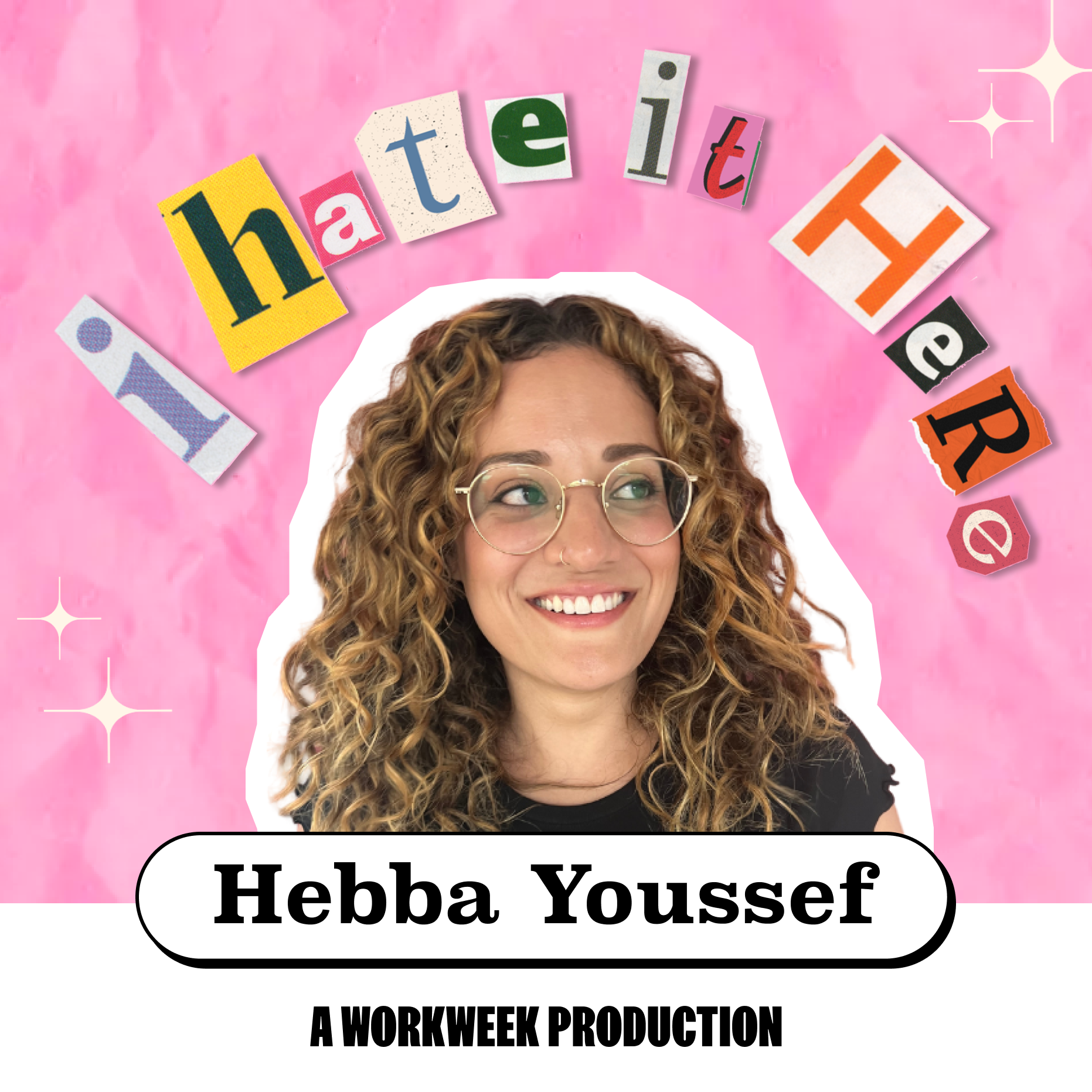^^ sometimes this is me, I’m way too young to be feeling this old??
Is it just me or does it seem like the state of growth at work is changing?
(It is, that was a hypothetical)
The past used to be all about career ladders and structured learning paths. The next somewhat defined step. Slap Senior in front of my title and call me evolved.
But in the last few years we’ve been in a bit of a change.
It’s not that career ladders and structured learning paths aren’t valuable but your employees might be looking for more and potentially something more fluid, iterative and customized.
What could be driving this change?
Growth and learning at work is transforming due to:
🍂Changing workforce expectations:
Millennials and Gen-Z have changed the convo around growth at work in interesting ways. Millennials were described as having an unquenchable thirst for what was next, desire for frequent feedback, and need for transparency. Some observations that have been made about Gen-Z is that they are less interested in following linear career paths, are more open to gig work, freelancing and entrepreneurship and are looking for real skill development and continuous learning. And all that shapes how we think about growth & learning at work.
🤖Advances in tech:
As tech evolves so does work. New tools are emerging every day that are changing how work gets done. Now. AI can help handle repetitive tasks, analyze large amounts of data, and help provide insights in seconds. That means there’s an opportunity to upskill and reskill employees and more time for more strategic and creative work.
💻Shifting working styles (in-person/hybrid/remote):
In the last few years work has become increasingly digital where things like online meetings, asynchronous comms and virtual meetings are more the norm than in-person. That digital first style also has an impact on growth and learning at work. It means learning opportunities will look different and our future workforce might require more training around specific skills like communication, virtual collaboration, or virtual facilitation.
So where does that put us now?
Well, maybe we’re in a new era of learning where instead of a focus on this structured career path employees would rather be offered something customized to their specific needs that unlocks more than 1 path forward.
JOIN 150K+ HR LEADERS
Get insights, learnings, and advice on how to build companies and cultures that people actually love.
No spam. Unsubscribe any time.
Before we get to what that could look like, I tapped some experts to talk about what good learning looks like and what to be mindful of!
What should (good) learning look like?
You know I LOVE bringing you some expert takes so I reached out to my brilliant friends Erin Murphy & Sara Loncka from Experience Institute. They’re building an L&D studio focused on igniting motivation and growth for teams and organizations. I figured they’d have a thing or two to share about what good learning looks like!
Here’s are a few principles of good learning they called out:
🤸Humans learn by doing, through experience.
How many of the mindsets and skills you use on a daily basis did you acquire in a classroom? Not many, eh? That’s because we don’t learn in abstraction; we learn best when we’re actually doing the thing we’re trying to learn. Good learning programs give employees the opportunity to bring their day-to-day work into their learning experiences and to bring their learning back into their day-to-day work.
🚧We learn best just outside of our comfort zone.
Kids are great at taking risks. But, as we get older, we get scared of screwing up, so we play it safe, and we cut ourselves off from the learning that happens outside our comfort zones. The most impactful learning experiences, L&D programs or otherwise, push us just enough to grow. We’re not talking about panic-inducing leaps, but rather nudges into new territory. There, we experiment, we make mistakes, and we prove to ourselves what we’re capable of. Soon enough, what once felt daunting becomes doable, even energizing. Professional development means gradually expanding our comfort zones until new capabilities feel like second nature.
💡Motivation drives mastery.
We all know talent is the backbone of any successful business strategy. But that doesn’t mean that L&D should be dictated top-down from the C-Suite. You didn’t like it when your grandpa told you what to major in, and you still don’t want to be told what to learn. In talent development programs, the sweet spot lies at the nexus between company goals and employees’ interests, pain points, and passions. You can boost your employees’ learning experiences by tapping into their motivations and giving them some choice and ownership over their learning journeys.
📖Learning how to learn is the most durable skill.
Work is changing fast, you heard it here first. Okay, no you didn’t. While there’s endless talk about upskilling and must-have technical skills for the future of work (we see you, Machine Learning, AI, etc), the most valuable skill is actually learning how to learn. When your employees master the art of learning itself—how to absorb new information, adapt to change, and build new capabilities—they develop the ultimate durable skill. Learning programs create opportunities for employees to develop their learning muscles: approaching challenges with curiosity, breaking down complex problems, and building the mental frameworks that make future learning easier.
👩🏾🍳An ingredient you can’t learn without: reflection.
Ever wonder why some amazing (and expensive) workshops seem to evaporate from memory a week later? Learning leaders cross their fingers and hope employees will apply what they learned. But people are busy and forgetful. The best learning programs don’t treat reflection as an afterthought—they weave it into the fabric of the experience. When we pause to reflect, connect dots, and apply what we’ve learned, that’s when it sticks. It’s the difference between attending a workshop and actually changing the way we work.
🏈Learning is a team sport.
Sure, those asynchronous, ‘bite-sized’ learning platforms are tempting, and they work well for technical skills—looking at you, coding tutorials. But do you really want to change mindset and behaviors or shift a culture? That requires human connection. We need peers to exchange ideas with, mentors to challenge us, and coaches to push past barriers. When someone joins a development program, their manager should be an active partner in their growth—not just a signature on a form. Learning in community gives us space to share our struggles and wins, provides accountability to stay on track, and (added bonus!) amplifies lessons learned throughout the organization.
📣Big shoutout to Erin & Sara for dropping these GEMS. I LOVE their approach at Experience Institute because it centers around taking “Leaps”—learning experiences that blend essential skills with hands-on, self-directed projects that push people out of their comfort zones and create real impact.
Now, let’s talk about what you can do to incorporate these lessons into your learning culture to foster an environment that is relevant to the NOW.
Rethinking learning:
Here’s a wild idea… What if we set fire to traditional career development plans and embark on a different journey?
As Doc Martin would say, “where we’re going, we don’t need roads.”
What if instead of making specific career focused plans we did something that helped employees achieve professional and personal growth?
WOULDN’T THAT BE GRAND??
What could that look like… you know I ALWAYS have ideas.
🙋🏽♀️Personalize learning paths:
Instead of career focused learning paths, what if you created personalized learning paths? I’ve said it a dozen times – we’re in the age of personalization. I want my Netflix recommendation for my next watch, my Spotify suggestions for new artists to listen to and a FYP of different creators to follow on Tiktok.
We cannot escape the fact that our employees have been accustomed to personalization in their personal lives and will look for it in their professional lives.
<a brief interlude>
WTF are personalized learning paths?
Personalized learning paths are plans that are tailored to the individual and focus on things like interest, skills and learning style. It’s a flexible approach to learning and acquiring knowledge.
A bit unlike career-focused paths which are specifically designed for employees to move up/across to certain job roles or promotions.
To leverage personalized learning paths:
1. Train your managers. Your managers are the first line of defense for almost everything – especially growth and learning! Managers need to be able to identify learning opportunities, assign stretch projects and give feedback on the things being learned. They are crucial to the success of personalized learning. If they can’t provide support around learning then it will be an uphill battle to help your employees feel supported when it comes to learning, growth and development.
2. Leverage IDPs: Individual Development Plan can be super helpful in putting pen to paper and having your employees thoughtfully considering their own development. Enter managers! You’ll have to lean on your managers here to help employees fill these out and continue to check in on their progress. Hence #1.
IDPs are a great way to get the conversation started & going around what your employees need to and WANT to learn.
📣If your employees are struggling to identify strengths or skills, consider leveraging an assessment! Things like Gallup Strengths or PI’s behavioral assessment can be helpful to uncover areas of strengths & opportunities.
3. Offer flexible learning opportunities: Your employees could (they do) all have different learning styles. Some may defer to watching videos, others may lean on podcasts and some may desire a mentor or coach to guide them! Providing options that are flexible to the employee is crucial for personalized learning.
📚Here are some resources to check out:
- Udemy – the courses offered are VAST and possibility for learning… ENDLESS.
- Skillcycle – this platform combines coaching + development + performance. Aida (AI agent) can identify areas of opportunity to focus on for growth and development.
4. Monitor the progress: Regularly checking in with employees seems like a lost art? But unless you check in you’ll never know if your employees are getting what they need out of the learning opportunities at your organization. This can also help you identify if you have managers who are struggling here.
The bottom line: this isn’t a revolutionary idea but it is a change from how some organizations have done traditional learning. Instead of focusing on the next role this approach focused holistically on the employee and where they need to grow.
There aren’t endless positions and levels at organizations – so with this approach you are truly enabling learning for development rather than learning for a promotion. Just sayin’.
Something to be afraid of…
OKAY EVERYONE STAY CALM…
NEXT WEEK… IT’S TIME!!!!
👻 HR HORROR STORIES RETURNS 👻
It’s one of my favorite events of the year!! We’re gonna laugh, we’re gonna cringe, we’re gonna maybe scream in fear.
And it’s a double double toil and trouble kind of treat next week…
We have the newsletter AND we have a special podcast episode dropping.
THIS IS WHAT DREAMS ARE MADE OF!
I really do love spooky szn.


